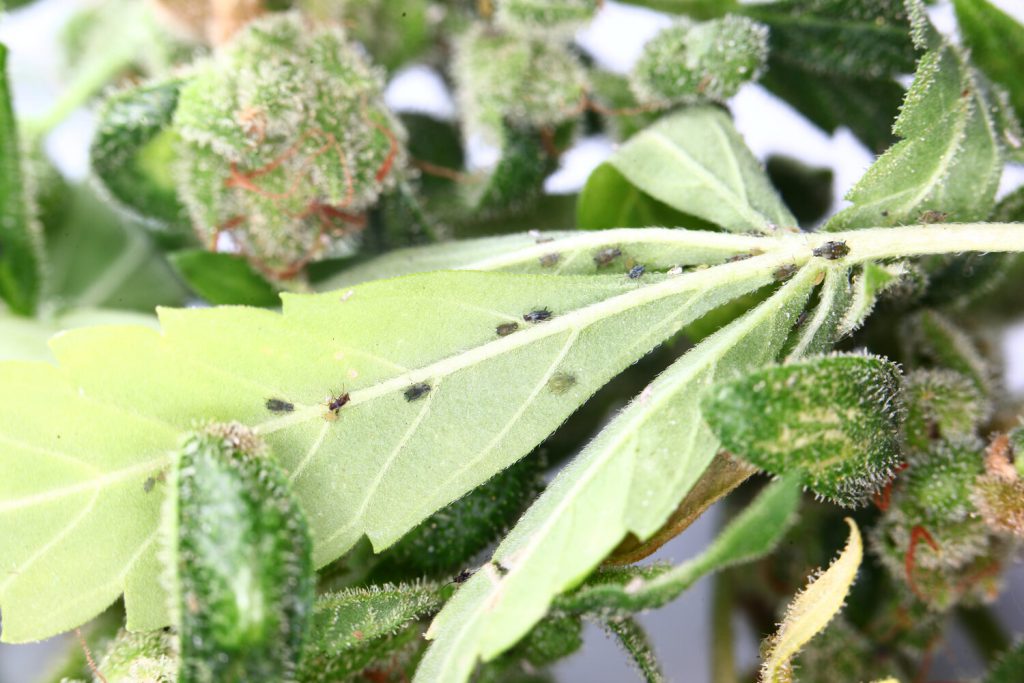How Grow Problems Happen: The Pathogen Triangle
When it comes to problems in the grow, it’s easy to jump to conclusions and point to one aspect or another as the root of your issues, but if you aren’t aware of how problems develop, your first step may be a misstep, leading you down an inefficient path. Zac Ricciardi of BioSafe Systems explains that in order for a problem to happen in the grow, three things must be present: a threat, an environment conducive to that threat and a host that is susceptible to that threat.
The Pathogen Trifecta
If we think of it like a triangle, then on each angle, there needs to be a solid base for the triangle to exist. In this case, each angle represents each of the conditions that are necessary for our triangle (problem) to develop:
- Pathogen Pressure
- Conducive Environment
- Susceptible Host
Only when all three things overlap does an infestation occur and is able to get out of control. Growers have to be able to address not only pests, pathogens or susceptible hosts but also their conducive environment that is often overlooked.
If you are treating for an issue in your grow, make sure it isn’t something that you set yourself up for. If you think that your environment is conducive to mold, spray/treat for mold. If there’s still mold growing, it may not be your environment, it may be that your plant is susceptible to the pathogen pressure that is ever-present.
Constant Pressure
Pests will find their way in [to your grow] regardless of what you do….you could be showing a friend your grow, it could be a windy day, you could’ve taken in a dirty clone, an owner or investor can come in…something will compromise your sterile lab environment, it’s just life.

Pathogens and pests are everywhere in the air and surfaces that surround us, and maintaining a sterile environment 100% of the time is simply unrealistic. Being a good grower doesn’t mean you don’t have issues, it's how you deal with them.
Nothing is Unfixable
Most other horticultural growers (cucumber, etc) don't have the luxury of cutting their crops down and starting over. They need the cantaloupe, corn, whatever to come to fruition, so they have had to come up with ways to fix issues as opposed to walk away. For this reason, we can look to established practices and research from commercial agricultural applications.

Growers can use certain tools like microbial such as OxiPhos to induce a plant’s “immunity” (plants don’t have white blood cells but these products will induce a systemic response that leads to a systemic acquired resistance to threats). These tools can put your plants on the defensive from the beginning, ensuring that they are ready for any pathogen pressure and eliminating the “conducive host” from the pathogen triangle.
There is a certain amount of effort that goes in to having proper IPM, and sometimes the diligence portion is lacking but it isn’t because growers don’t want to or are to lazy to implement it properly. Rather, many simply don’t understand what to look for. I’ll go into a grow and someone will tell me that they think they have russet mites, and they lift up their leaves to show me but that’s where you’d look for spider mites, not russet mites.
Often, growers will recognize that they have a problem but they don’t know what it is and they attempt to find out through social media, google and “broscience” but the problem with this approach is if you start treating for the wrong problem, you could compound your issues. For this reason, we’ve released a piece to help you identify common pests and pathogens in your garden with a few tips for preventative and curative approaches to dealing with them.